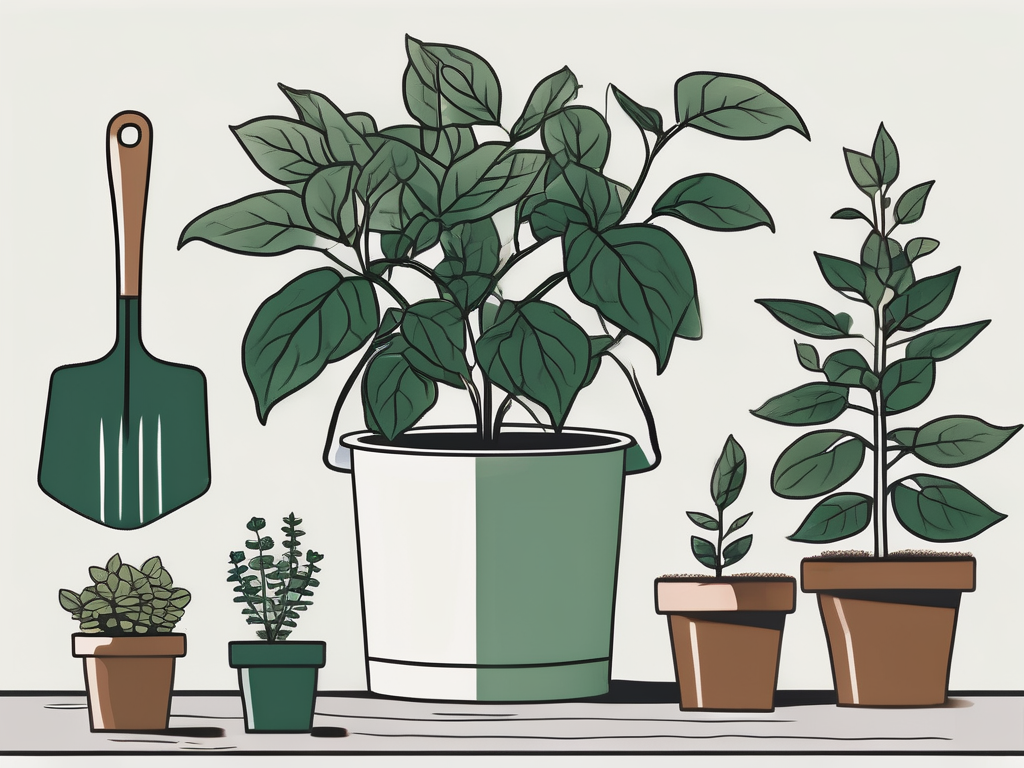
Ah, the Tradescantia, often known as the Wandering Jew or Inch Plant. Its vibrant colors and hardy nature make it a favorite among plant people. But did you know it's also one of the easiest plants to propagate? If you're looking to expand your indoor greenery without spending a fortune, propagating Tradescantia might just be your next project.
In this post, we’ll walk through the process of propagating Tradescantia step by step. Whether you’re a seasoned plant parent or a newbie looking to try your hand at plant propagation, you’ll find everything you need to know right here. Let’s get started!
Understanding Tradescantia: A Brief Overview
Before we jump into the how-tos, let's chat a bit about what makes Tradescantia so special. Native to the Americas, Tradescantia is adored for its striking foliage. You'll find varieties with leaves ranging from deep purple to vibrant green, often adorned with stripes or variegations that make them stand out in any plant collection.
What’s fascinating about Tradescantia is its adaptability. It thrives in a range of conditions, making it a perfect candidate for both novice plant lovers and those who might not have the greenest thumbs. Tradescantia is not just a pretty face; it’s resilient and forgiving, traits that can be very comforting for those just starting their plant journey.
Now, let's move on to understanding the basic requirements to keep your Tradescantia thriving. Knowing what your plant needs will set the stage for successful propagation.
Gathering Your Propagation Tools
Before you start snipping away, it’s important to gather the right tools. You don’t need anything fancy, but having the right supplies can make the process smoother. Here’s what you’ll need:
- Sharp scissors or pruning shears: A clean cut is crucial to avoid damaging the plant. Blunt tools can crush the stem, making it harder for roots to develop.
- Small pots or containers: These will hold the cuttings as they root. You can use anything from terracotta pots to repurposed yogurt containers.
- Potting mix or water: You can root Tradescantia in either soil or water. If you’re using soil, a standard potting mix will do. For water, any clean container will work.
- Optional rooting hormone: While not necessary, a rooting hormone can speed up the rooting process. If you choose to use it, make sure to follow the instructions on the package.
Once you’ve gathered your tools, you’re ready to start cutting. Let’s move on to selecting the perfect stems for propagation.
Choosing the Right Stems
Not all stems are created equal when it comes to propagation. Picking the right ones can make all the difference. Here’s what to look for:
- Healthy and vibrant: Choose stems that are free from pests and disease. They should be firm to the touch and show no signs of wilting.
- Length: Aim for stems that are about 4-6 inches long. This length provides enough nodes for rooting and will give the new plant a good start.
- Nodes: Make sure the stem has a few nodes, as these are the points where roots will develop. More nodes mean a higher chance of successful propagation.
Once you’ve identified the best stems, it’s time to make your cuts. This is where the magic starts!
Making the Cut
Ready to make the cut? Here’s how to do it:
- Identify the nodes: Nodes are the small bumps along the stem. They’re essential for rooting, so make sure your cut includes at least two nodes.
- Cut below a node: Using your sharp scissors or pruning shears, make a clean cut just below a node. This ensures that the cutting has the best chance to root.
- Remove lower leaves: Strip away the leaves from the lower part of the cutting. This prevents them from rotting in water or soil and focuses the plant’s energy on root development.
With your cuttings prepared, you’re ready to decide whether to root them in water or soil. Each method has its pros and cons, which we’ll explore next.
Rooting in Water
Rooting Tradescantia in water is a fantastic way to watch the progress of your cuttings. Here’s how to do it:
- Fill a container with water: Use a clean jar or glass and fill it with enough water to submerge the nodes but not the leaves.
- Place the cuttings: Arrange the cuttings in the container, ensuring the nodes are submerged. You can place multiple cuttings in one container, just make sure they have enough space to breathe.
- Find a bright spot: Place the container in a well-lit area, but avoid direct sunlight, which can scorch the cuttings.
- Change the water regularly: To prevent stagnation and encourage healthy root growth, change the water every few days.
After a couple of weeks, you should start to see roots developing. Once they’re a few inches long, your cuttings are ready to be potted in soil.
Rooting in Soil
If you prefer to start your cuttings directly in soil, here’s how to go about it:
- Prepare the pot: Fill a small pot with potting mix, leaving about an inch of space from the top.
- Insert the cuttings: Make a hole in the soil with your finger or a pencil, then gently place the cutting into the soil, ensuring the nodes are covered.
- Firm the soil: Lightly press the soil around the base of the cutting to secure it in place.
- Water thoroughly: Give the soil a good soak, allowing excess water to drain away. Keep the soil consistently moist but not waterlogged.
- Provide the right environment: Place the pot in a warm, bright location, away from direct sunlight.
It might take a bit longer for roots to develop in soil compared to water, but once they do, your new plant will be ready to thrive!
Caring for Your New Tradescantia Plants
Now that you’ve got your new Tradescantia plants, let’s talk about care. Here are a few tips to ensure they grow strong and healthy:
- Light: Tradescantia loves bright, indirect light. Too much direct sunlight can scorch the leaves, while too little light can cause them to lose their vibrant colors.
- Water: Keep the soil consistently moist, but be cautious about overwatering. Tradescantia doesn’t like to sit in soggy soil, which can lead to root rot.
- Humidity: These plants enjoy a bit of humidity, so misting them occasionally or placing them near a humidifier can be beneficial.
- Fertilizer: During the growing season (spring and summer), feed your Tradescantia with a balanced liquid fertilizer every few weeks. This will encourage lush growth.
By giving your new plants the right conditions, they’ll reward you with beautiful and abundant foliage.
Common Issues and Solutions
Even the hardiest plants can encounter a few hiccups. Here are some common problems you might face with Tradescantia, along with solutions:
- Wilting or yellowing leaves: This could indicate overwatering or poor drainage. Ensure your pot has drainage holes, and let the soil dry out slightly between waterings.
- Leggy growth: If your plant is stretching out, it might not be getting enough light. Move it to a brighter spot, but avoid direct sunlight.
- Pests: Tradescantia can occasionally attract pests like spider mites. Regularly check your plants and, if needed, use an insecticidal soap or neem oil to treat infestations.
By keeping an eye on your plants and addressing issues promptly, you can keep your Tradescantia looking its best.
Creating a Gorgeous Tradescantia Display
Once you have several thriving Tradescantia plants, why not create a stunning display? Here are some ideas to showcase your new greenery:
- Hanging baskets: Tradescantia’s trailing habit makes it perfect for hanging baskets. Let the vines cascade over the sides for a lush effect.
- Mixed planters: Combine different Tradescantia varieties in one pot for a colorful and textured arrangement.
- Terrariums: Tradescantia can adapt well to terrariums. Pair them with other moisture-loving plants to create a mini rainforest.
- Shelf displays: Use Tradescantia as part of a shelf display, mixing them with books and other decorative items for an eye-catching vignette.
With a little creativity, your Tradescantia collection can become a beautiful focal point in your home.
Sharing Your Tradescantia Love
If you have more Tradescantia plants than you know what to do with, consider sharing the love! Here’s how:
- Gifts: Propagated plants make thoughtful gifts. Share them with friends, family, or neighbors who appreciate a touch of green.
- Swaps: Engage in plant swaps with other plant lovers. It’s a great way to diversify your collection without spending money.
- Community projects: Donate extra plants to community gardens or schools. They’ll bring joy and greenery to public spaces.
By sharing your plants, you’re spreading the joy of plant care and cultivating connections with fellow plant lovers.
Final Thoughts
Tradescantia propagation is a fun and rewarding way to grow your plant collection. By following these steps, you can easily multiply your plants and enjoy their vibrant beauty throughout your home. Remember, the key is to start with healthy stems, provide the right conditions, and be patient as your new plants settle in.
At Cafe Planta, we're all about sharing the love of plants. Whether you're looking for unique houseplants or stylish plant-themed apparel, we're here to help. If you have questions about plant care, don’t hesitate to email us or send us a message on Instagram. Let's grow together!












